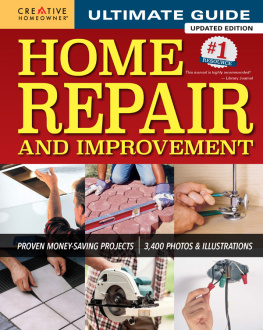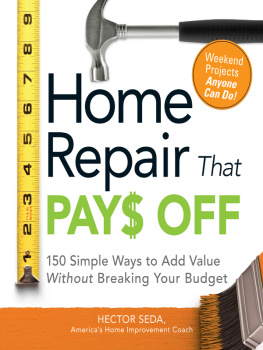Table of contents
The first thing every homeowner must know
When you have questions, The Family Handyman has answers
Since 1951, The Family Handyman has been dishing out the best do-it-yourself home advice available. Our recipe is simple: Go straight to the pros for real-world, field-tested expertise. And then explain the projects so that anyone can be successful. Our team of more than 1,000 Field Editors includes home experts of every kind, from contractors and real estate agents to architects and engineers. And our readersmore than 4 million across North Americaare constantly sharing their tips and experiences with fellow homeowners. This book contains some of that expertise. But theres a whole lot more


The Family Handyman Magazine
Get North Americas top home improvement magazine at The Home Depot, Lowes and other retailers. Or subscribe and save at FamilyHandyman.com.

FamilyHandyman.com
Get instant access to thousands of home improvement projects, step-by-step repairs, storage solutions and more!

The Family Handyman for iPad
Get every issue of The Family Handyman as its published, plus extra tips, articles and videos. Find it at the App Store.

The Family Handyman Newsletters
Get ideas, tips, projects and repairs delivered to your in-box every weekFREE! Sign up at FamilyHandyman.com.

The Family Handyman Books
Get expert tips and step-by-step instructions for repairs, improvement projects, organizing and more. Shop at FamilyHandyman.com.

Tip Genius App
More than 300 FREE tips for storage and organizing, simple repairs, easy improvements and more! Download it at FamilyHandyman.com/diy-tip-genius.
No.
Understand your plumbing system
Basic knowledge for better decisions
When it comes to home repairs and improvements, youre in charge. But when the plumber seems to be speaking a foreign language, its tough to make a smart call. So take five minutes to get acquainted with your system. The basics are simpler than you might think.
The DWV system
The drain, waste and vent system carries waste out of your house and into the city sewer lines. Sounds simple enough. But for plumbers, its trickier than the supply system. There are more code requirements to follow, and more know-how is needed to make it work well.
The most important DWV rule is this: Every drain must have a trap, and every trap must have a vent. Traps, those U-shaped pipes you see under sinks, hold wastewater, which prevents nasty sewer gas from flowing up into your home. Vents are simply pipes that lead outside through the roof. Without a vent, water flowing through a trap creates a vacuum and siphons the trap dry. By allowing air into the system, vents act as a vacuum breaker.

Drain, waste and vent system
Drain and waste lines (shown in blue) must include traps, which keep sewer gas from entering your home. Vents (shown in yellow) break the siphon effect of flowing waste to keep water in the traps.

The water supply system
Your water supply system taps into the city water main, runs through a meter that measures your water usage and then branches throughout your home. The branch lines in your home may be any of the types shown below. Older homes are sometimes museums of pipe history, including several types of pipe.
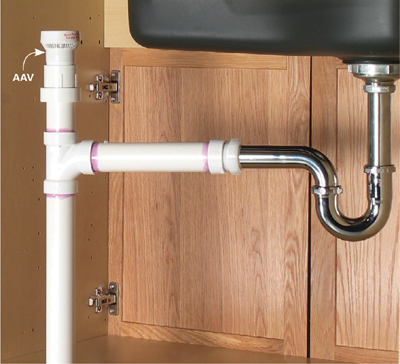
Air admittance valves
An AAV lets air into the DWV system, but not out, so it can take the place of a vent pipe running up through the roof. On remodeling projects, that can save the plumber a lot of workand you a lot of moneyif its allowed by your local code. AAVs arent allowed in all situations.
Pipe types for water supply
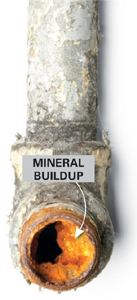
Galvanized steel
Unlike other types of pipe, galvanized steel almost always has threaded, screw-together connections. Its life expectancy is about 70 years, but some century-old galvanized pipes are still in service. If you have galvanized pipe and low flow at faucets, chances are the pipe is to blame. Galvanized pipe is prone to mineral buildup that eventually chokes off the water flow. Complete replacement is the best cure, but you can often improve flow just by replacing any exposed horizontal pipes.
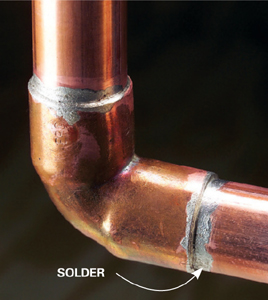
Copper pipe
Copper was the standard water supply pipe for decades until less costly materials became available. It can be connected in several ways, but most joints are sealed by melting metal solder into the joint. The lifespan of copper depends on the local water. In some areas, it lasts as little as 25 years. In others, it lasts two or three times that long.
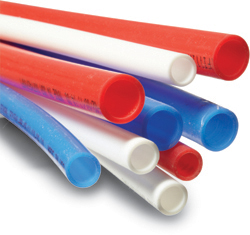
PEX
PEX is flexible, so its much easier to install than other types of pipe. That, plus low cost and immunity to aggressive water, make it the most common choice for new water lines. PEX is a latecomer to North America, but has been used for decades in Europe. PEX comes in a range of colors.
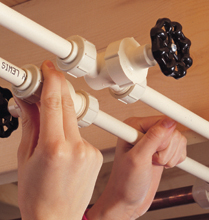
CPVC
Unlike metals, this plastic pipe doesnt corrode, so its been common in regions with aggressive water for the past 40 years. CPVC connections are usually made with a glue-like cement, but compression fittings (shown here) and other methods can also be used.
No.
Understand your heating system


![Shanks - Essential bicycle maintenance & repair: [step-by-step instructions to maintain and repair your road bike]](/uploads/posts/book/235248/thumbs/shanks-essential-bicycle-maintenance-repair.jpg)

